
Provide you with China flower delivery, which can be delivered to all cities in China (non remote areas).
Welcome to the enchanting world of daisies! With their delicate petals and vibrant colors, these charming flowers have captivated hearts for centuries. Whether you’ve stumbled upon a field of wild daisies or received a bouquet as a thoughtful gift, there’s no denying the irresistible allure of these timeless blooms.
But did you know that daisies hold more than just aesthetic appeal? They are steeped in rich symbolism across different cultures, celebrated in literature and art, and even carry spiritual meanings. In this blog post, we will delve into the meaning behind the daisy flower – uncovering its fascinating history and exploring its significance in our lives today.
So join us on this journey as we unravel the secrets hidden within each delicate petal. Prepare to be amazed by the versatility and beauty that lies within one of nature’s most beloved blossoms – the humble yet extraordinary daisy!
Symbolism of the Daisy in Different Cultures:
The daisy flower holds significant symbolism in various cultures around the world. In ancient Egypt, it was considered a sacred flower and symbolized childbirth and motherhood. The Egyptians believed that daisies had healing properties and used them as remedies for ailments.
In Celtic culture, the daisy was associated with purity and innocence. It represented youthfulness and was often given to young girls as a symbol of their youthful beauty.
In Norse mythology, the daisy was linked to Freya, the goddess of love and beauty. It signified fertility and new beginnings, making it a popular flower during weddings or celebrations of birth.
In traditional Chinese medicine, daisies were used to treat digestive disorders. They were believed to have cooling properties that could help balance the body’s energy.
Native American tribes also held reverence for the daisy. It was seen as a symbol of renewal and rebirth because it would bloom again after being trampled on or cut down.
Throughout history, the daisy has been celebrated for its simplicity and resilience. Its delicate petals represent purity while its yellow center signifies warmth and happiness.
The symbolism surrounding this humble flower varies from culture to culture but ultimately reflects themes of purity, beauty, fertility, resilience, and renewal – all qualities that make the daisy universally cherished across borders.
The Daisy flower in Literature and Art
Throughout history, the daisy flower has captured the hearts of artists and writers alike, becoming a symbol of beauty, innocence, and purity. In literature, this delicate flower has been used to evoke various emotions and themes.
In William Shakespeare’s play “Hamlet,” Ophelia famously sings about daisies while she descends into madness. The image of the daisy represents her innocence lost in a world filled with tragedy.
Similarly, in Nathaniel Hawthorne’s novel “The Scarlet Letter,” the character Pearl is often associated with daisies. Her wild spirit mirrors the simplicity and untamed nature of these flowers.
Artists have also found inspiration in the charm of daisies. Vincent van Gogh painted several still-life pieces featuring vibrant bouquets of these blossoms. His brushstrokes capture their delicate petals and radiant colors with breathtaking detail.
Furthermore, Georgia O’Keeffe created striking close-up paintings of daisies that celebrate their intricate forms and graceful elegance.
From poetry to paintings, the presence of daisies throughout artistic expressions highlights their enduring appeal as symbols of beauty and purity. Their simple yet captivating nature continues to inspire creators across different mediums.
Whether through words or brushstrokes, artists have immortalized these charming flowers for generations to come – forever capturing their timeless allure on canvas or paper.
The spiritual meaning of daisies goes beyond their delicate appearance and vibrant colors. These charming flowers have been associated with various spiritual beliefs and practices throughout history.
In some cultures, daisies are seen as a symbol of purity, innocence, and new beginnings. They represent the soul’s journey towards enlightenment and the search for inner peace. Daisies are often used in rituals or ceremonies to cleanse negative energies and promote positivity.
For others, daisies hold a deeper connection to divination and intuition. The petals of these flowers are believed to possess magical properties that can enhance psychic abilities and provide clarity during meditation or spiritual practices.
Moreover, daisies are frequently linked to love and relationships. They symbolize loyalty, faithfulness, and commitment in romantic partnerships. Some believe that placing a bouquet of daisies under one’s pillow can bring about dreams of true love or strengthen existing bonds.
Additionally, daisies have been associated with fertility and childbirth in certain spiritual traditions. It is said that these flowers can bring blessings upon expectant mothers by ensuring healthy pregnancies and safe deliveries.
The spiritual meaning of daisies varies across different belief systems but commonly revolves around themes of purity, divination, love, fertility, and transformation. Embracing the symbolism behind these beautiful blooms can help us connect with our inner selves while fostering positive energy in our lives
The healing properties of daisies have been recognized for centuries, making them an essential ingredient in traditional herbal medicine. These delicate flowers are known for their soothing and calming effects on the body and mind.
Daisy tea, made by steeping dried daisy flowers in hot water, is a popular remedy for digestive issues such as indigestion, bloating, and stomach ulcers. It helps to reduce inflammation in the digestive tract and promotes healthy digestion.
In addition to its effects on digestion, daisies are also believed to have anti-inflammatory properties that can help relieve pain and swelling associated with conditions like arthritis or muscle soreness. Applying a poultice of crushed daisy leaves directly onto the affected area can provide relief.
Furthermore, daisies are often used in skincare products due to their soothing and rejuvenating qualities. They can help calm irritated skin, reduce redness, and promote a youthful complexion. Infusing your bathwater with dried daisy petals can create a relaxing experience while nourishing your skin.
The aroma of fresh daisies has been found to have mood-lifting benefits. In aromatherapy practices, it is believed that inhaling the scent of these beautiful flowers can help alleviate stress and anxiety while promoting feelings of happiness and relaxation.
Incorporating daisies into your wellness routine may provide numerous healing benefits for both your physical health and emotional well-being.
Growing and Caring for Daisies
Now that you know all about the symbolism, literary significance, spiritual meaning, and healing properties of daisies, why not try growing them yourself? Whether you have a spacious garden or just a small balcony, daisies can bring beauty and joy to any space.
1. Choose the right variety: There are several types of daisy flowers available, including Shasta daisies (Leucanthemum x superbum) and English daisies (Bellis perennis). Consider your climate and preferences before selecting the variety suitable for your area.
2. Find the perfect spot: Daisies thrive in full sun but can tolerate partial shade as well. Make sure they receive at least six hours of sunlight each day.
3. Prepare the soil: Daises prefer well-draining soil that is slightly acidic to neutral pH. Before planting, amend the soil with organic matter like compost or peat moss to improve its fertility and drainage.
4. Planting time: Depending on your location, plant daisy seeds or seedlings in early spring or fall when temperatures are mild. Follow the instructions on seed packets or nursery labels for proper spacing between plants.
5. Watering needs: While daisies appreciate regular watering during dry spells, be careful not to overwater them as it can lead to root rot. Allow the top inch of soil to dry out between waterings.
6. Fertilizing routine: Feed your daisy plants with a balanced fertilizer once every month during their active growth period – spring through summer – following package instructions for application rates.
7.Controlling pests and diseases: Keep an eye out for common pests like aphids or powdery mildew that may affect daisy plants. Use organic insecticides if necessary but always follow the instructions carefully.
8. Regular pruning: To encourage bushy growth and prolong blooming, deadhead spent flowers regularly. You can also cut back the plants after the first flush of blooms to encourage a second round of flowering.
9. Winter care: In colder regions, cover daisy plants with a thick layer of mulch to protect them from harsh winter conditions.
10. Divide and propagate: Daisies tend to spread quickly, so you may need to divide and transplant them every few years. This not only helps control their growth but also rejuvenates the plants for better blooming.
With these simple tips, you can enjoy a beautiful display of daisies in your garden year after year. Their cheerful blooms are sure to bring happiness and positivity to your space. Happy gardening!


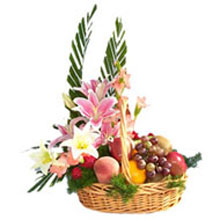
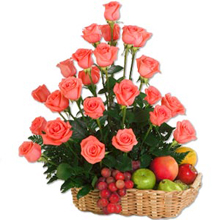



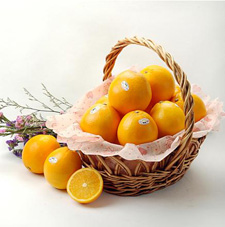

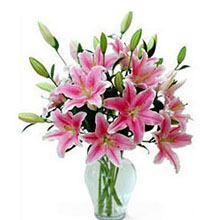





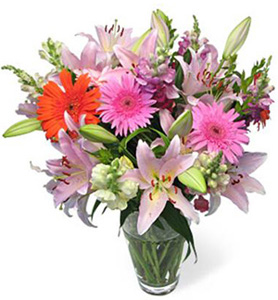


Provide you with flower delivery services in China cities, and flower delivery services on festivals / daily / anniversaries

Local fast delivery, your mind will arrive quickly! Fast delivery to your choice. The fastest delivery on a working day

The freshness of flowers is our quality standard. We choose the freshest flowers for you to express your feelings
Better Life Flowers Service & Serving global customers








2022 BetterLife Copyright | Privacy policy | Substitution Policy
Our shop No delivery fee (non remote areas), no service fee, safe online payment Dismiss